- 1. Key Takeaways
- 2. What is Ultralight Backpacking?
- 2.1. How is it Different from Traditional Backpacking?
- 3. Benefits and Downsides of Ultralight Backpacking
- 3.1. Ultralight Backpacking Benefits
- 3.2. Disadvantages of Ultralight Backpacking
- 4. Making an Ultralight Backpacking Checklist
- 4.1. The Ultralight Backpacking Big Four
- 4.2. Ultralight Backpacking Clothing and Footwear
- 4.3. Ultralight Backing Hygiene and Health
- 4.4. Ultralight Backpacking Consumables
- 4.5. Ultralight Backpacking Cookware
- 5. Tips on How to Prepare for an Ultralight Backpacking Trip
- 5.1. Be Conscious of the Weight
- 5.2. Ensure You Know How to Use Your Camping Gear
- 5.3. Start Easy
- 5.4. Consider Short Round Trips with Lower Elevation Gain
- 6. Final Thoughts
- 7. FAQs
- 7.1. What weight is considered ultralight backpacking?
- 7.2. How durable are ultralight backpacks?
- 7.3. What is the best material for ultralight backpacking?
- 7.4. What is the difference between fastpacking and ultralight backpacking?
- 7.5. How much money do you need to be a backpacker?
- 7.6. How old are backpackers usually?
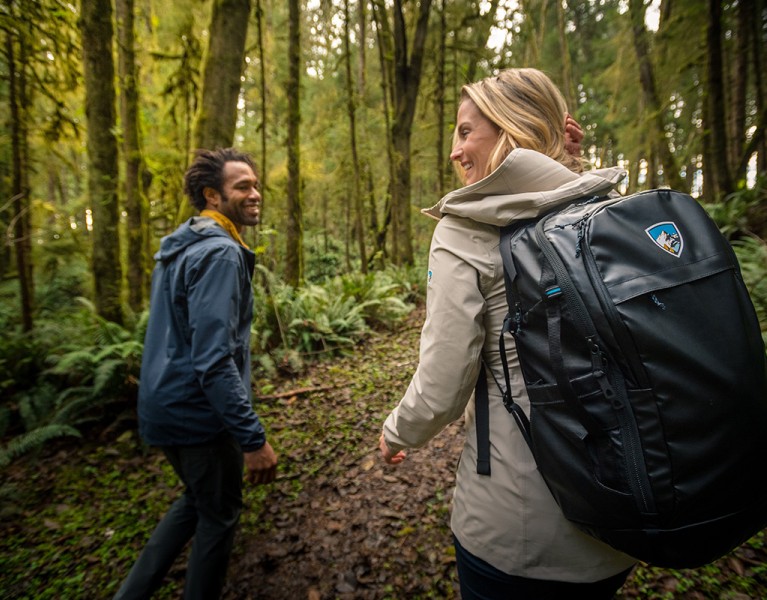
KÜHL's Guide on Ultralight Backpacking Basics And Essential Gear
Table of Contents [Show]
Backpackers are in the midst of an ultralight backpacking debate - with one-upmanship seen in having a base weight in the region of 10 pounds. The goal is to balance easy mobility and preparedness.
Although a lighter backpack allows for more flexibility, ultralight camping has its disadvantages, especially figuring out where to save some ounces out of your traditional loadout. The high cost of ultra-light backpacking equipment also makes the transition intimidating.
In this post, we’ll break down everything you need to understand about backpacking light. We’ll touch on its pros and cons and tips on how to switch to backpacking ultralight smoothly.
Because moving from a 50-pound backpack to a much lighter pack can be overwhelming, we’ve also included a complete list of the best ultralight backpacking gear and outdoor clothing for various seasons. Lightweight hiking food and drink options are also a key part of ultralight backpacking, and we’ve included them here.
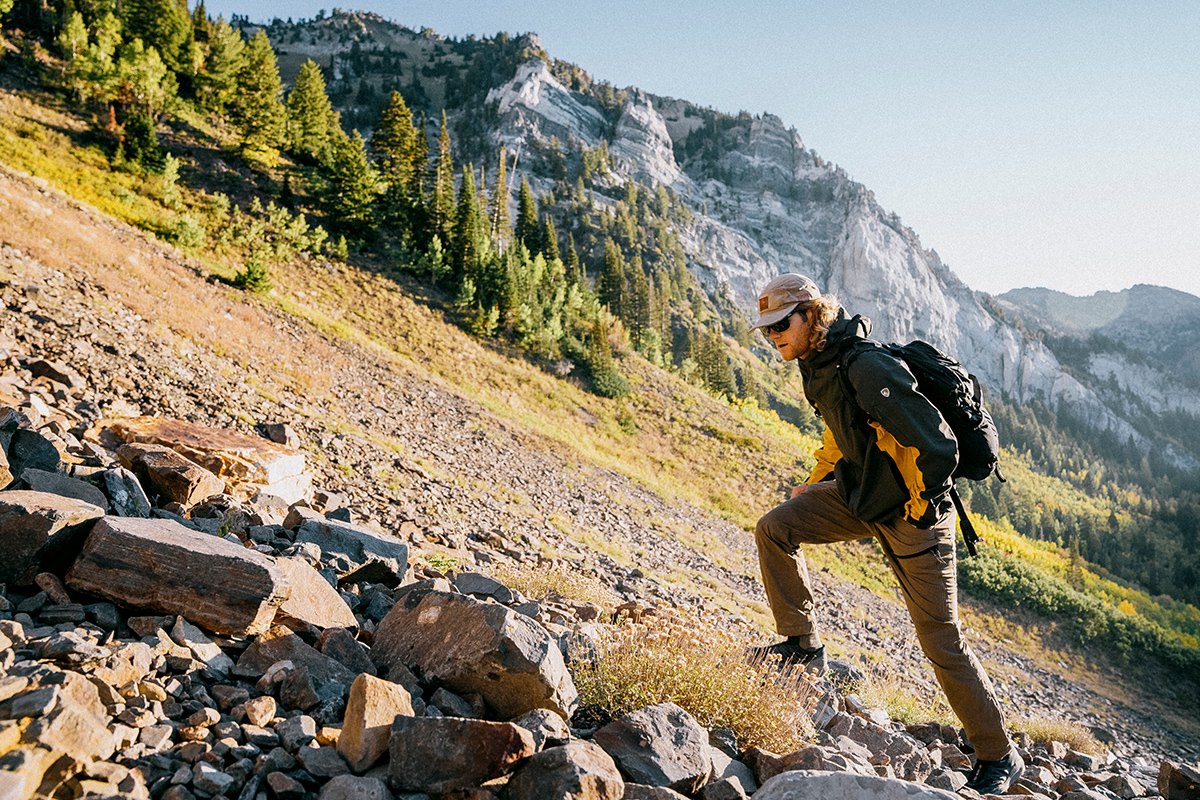
Key Takeaways
- Ultralight backpacking is reducing the weight of your hiking bag as much as possible without compromising comfort and efficiency.
- Minimalist backpacking involves relying more on good camping and hiking skills and less on gear.
- When ultralight hiking, some items, e.g. clothes, food, and fuel, are made lightweight by the amount you carry.
- Going ultralight from scratch saves you the money you’d have spent on heavy gear that would need to be replaced after a few trips.
- The big four in ultralight backpacking equipment are the most important and heaviest. These are the pack, tent, sleeping bag/quilt, and sleeping pad.
What is Ultralight Backpacking?
Ultralight backpacking means hiking with the least amount of gear possible. There’s no officially agreed-upon weight to define this style of backpacking. But hardcore proponents arbitrarily choose a base weight of 10 pounds (4.5 kgs) as the cut-off.
Another common method of determining the base weight is not exceeding 20% of one’s body weight when packing for a thru-hike and 10% for a day hike.
Base weight is how much your entire backpack weighs, excluding consumables like food, water, and fuel.
That’s to say that the total baggage weight can more than double after factoring in the weight of the consumables.
How is it Different from Traditional Backpacking?
Generally, the major difference between traditional and ultralight backpacking is the pack's base weight. But it gets deeper than just the weight.
Most conventional backpackers start with a base weight between 25 and 30 pounds. Add the consumables, and the bag's total weight easily exceeds 40 pounds.
On the other hand, ultra-lightweight backpacking focuses on a base weight under 10 pounds.
Of course, how much you pack depends on your destination, the length of the trip, and other individual circumstances, for instance, dispersed camping. But, an individual’s packing style speaks volumes about their personal trait and camping skills.
Inexperience is one of the main reasons some traditional backpackers carry more stuff than minimalist backpackers. They see backpackers with abnormally sized bags and think that’s what they need. Or, they believe everything the hiking shop seller says and end up buying gear they rarely use.
The “just in case” mentality is another common problem. And it’s often made worse by the “there’s more space left, I better fill it up” mindset.
We’re not against being adequately prepared. No one wants to be underprepared when out alone on the trail. But we doubt you’ll need four pairs of shoes and three woolly jumpers for a warm trip.
Unlike traditional backpacking, which focuses on gear, ultralight backpackers rely more on their good hiking and camping skills. By this, we mean basic skills every hiker should have, like proper planning, campsite selection, and balancing your walking pace and rhythm so you don’t expend too much energy.
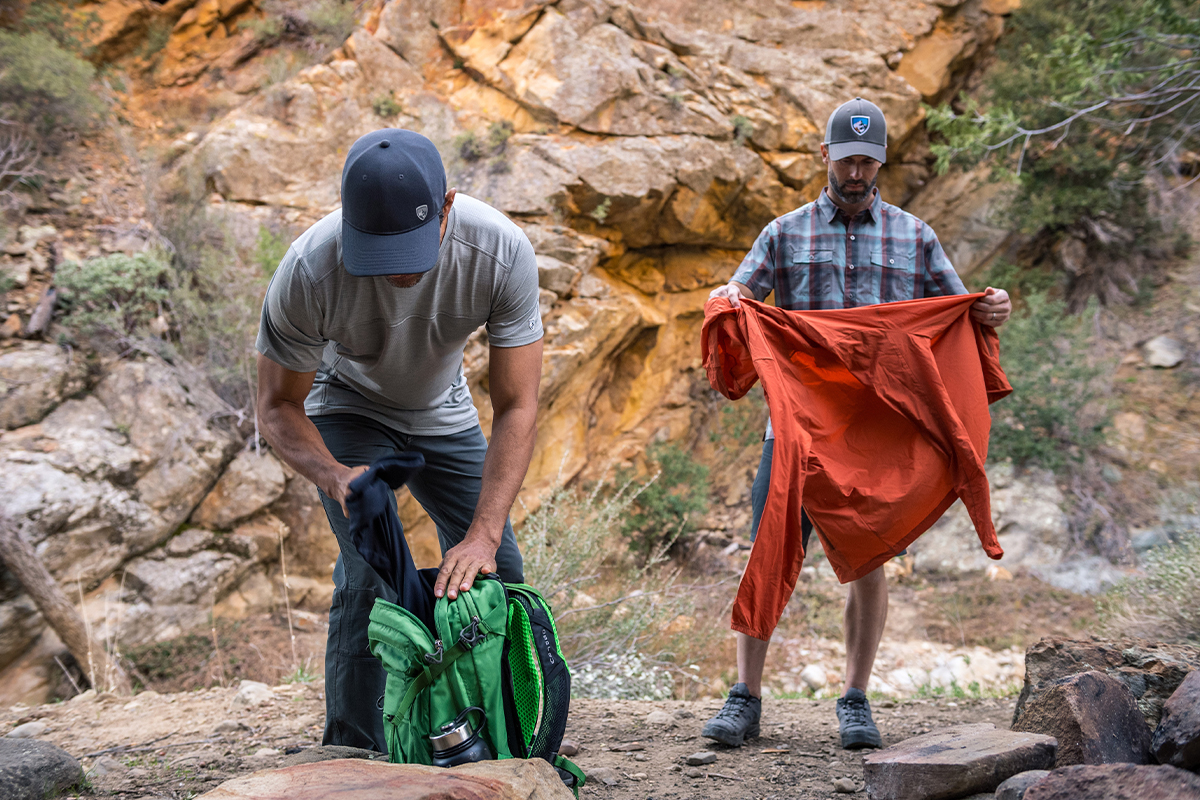
Benefits and Downsides of Ultralight Backpacking
Hiking with a bag weighing 10 pounds provides a number of benefits. But as a traditional backpacker who gets peace of mind from a 30-pound pack, it’s easy to feel underprepared, too. Let’s dive into the pros and cons of bringing an ultralight bag on the trail.
Ultralight Backpacking Benefits
The Challenge
If you view hiking as a way to challenge yourself mentally and physically, then you’ll love the idea of going ultralight. Minimalist ultralight backpacking is a challenge within a challenge.
When you embrace this mentality, you start looking for gear that ensures your comfort and safety on the trail while keeping your base weight lower.
You may want to embrace this hiking style, especially if you tend to overpack. Hiking with minimal gear challenges your organizational and camping skills by forcing you to pack only the essentials.
Takes Less Toll on Your Body
An obvious advantage of carrying a lighter bag is that it puts less strain on your back, shoulders, and joints. Thus, you lower the risk of back, knee, and joint problems that haunt most traditional backpackers later in life.
Older hikers often view lightweight backpacking gear as a blessing. They claim that an ultralight bag is easy on their painful joints and muscles, and this allows them to continue with their passion.
It goes without saying that if you wish to continue backpacking to a ripe old age, you’ll be wise to start carrying a lighter bag moving forward.
You Cover More Ground, Faster
Hiking is not about the distance covered or the fastest known time. But if you’re trying to conquer a popular trail like the Appalachian, you want to maintain a pace that elicits enthusiasm for adventure. Also, if your job doesn’t leave you with a lot of hiking time, a lighter bag is a surefire way to get in more miles within a short time.
Without forgetting, an ultralight pack allows you to traverse difficult terrains with relatively more ease.
Comfortable on the Trail
Another pro of light backpacking is that the bag is more comfortable on the trail. As an outdoor lover, a lighter backpack allows you to focus more on the adventures on the trail, not your hurting back and shoulders.
Simplifies Packing and Unpacking
When hiking lightweight, each gear has a specific use or multiple uses. Because it also entails proper planning based on where you are going, you only carry items that you will use.
This simplifies the packing process and also makes things easier for you when unpacking. Plus, it’s easier to get the gear you need on the trail without having to pour out everything in the pack.
It’s Easy to Hike Well Prepared
At first, traditional hikers appear better prepared than ultralight backpackers. A 30-or 50-pound bag will allow you to fit all the gear that satisfies your what-if mentality.
However, going lightweight doesn’t necessarily mean making dangerous decisions and compromises. If anything, ultralight hiking equipment saves you some weight, allowing you to include other gear critical for your hiking conditions.
For example, instead of buying a Coleman two-person tent that weighs 6.5 pounds, a smart hiker may prefer the Lunar Duo that weighs 2.8 pounds. The latter not only packs down smaller, but it also allows you to include another lightweight gear, for instance, the Optimus Lite stove (0.6 pounds).
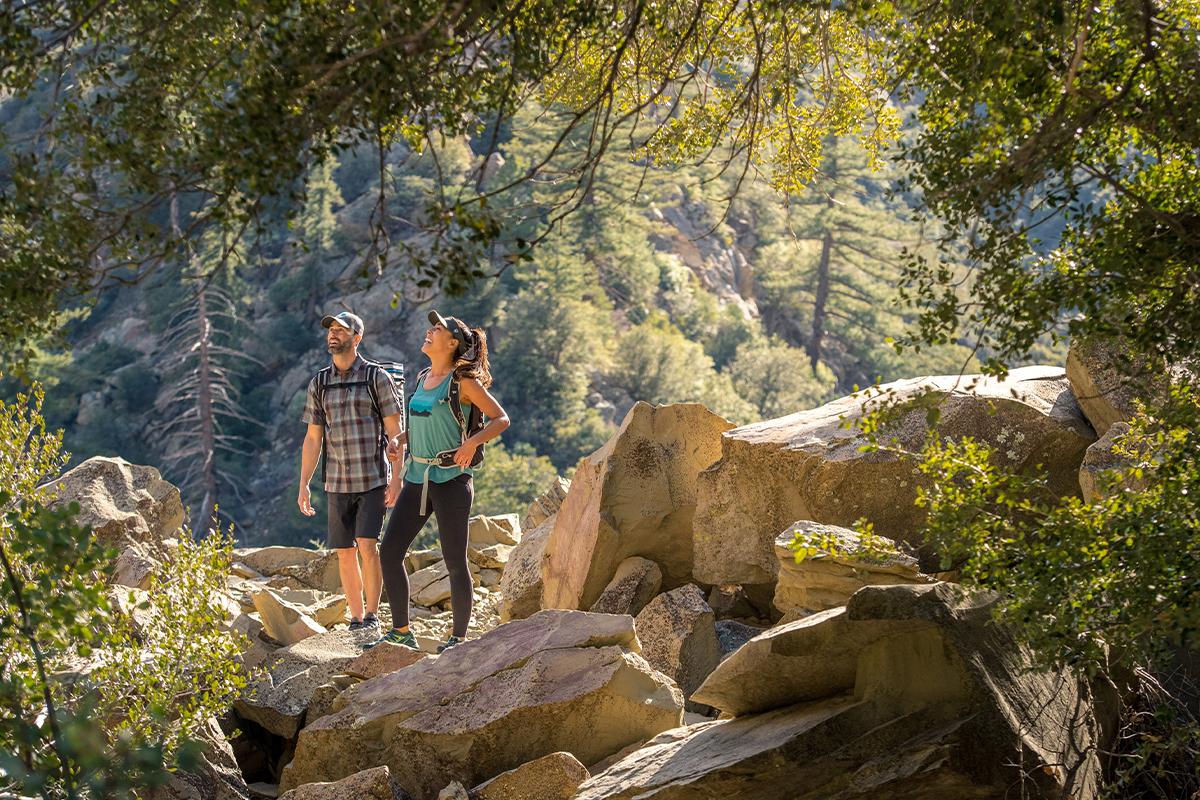
Disadvantages of Ultralight Backpacking
Going Ultralight Can be Expensive
One of the biggest cons of ultra-lightweight backpacking is the cost of the gear. It’s true that the best ultralight hiking equipment costs more, but there are reasons for that.
Besides being ultralight, minimalist packing gear needs to be durable and dependable. This necessitates premium and typically expensive materials, including ultralight polymers and carbon fiber.
Ultralight backpacking gear can also be expensive because they are aimed at serious backpackers looking to hike light.
That said, there are several ways of going ultralight on a budget. For instance, going ultralight will be super duper expensive if you’re looking to replace all your existing gear with ultralight alternatives. Instead, you could consider buying it down. Replace one or two items at a time and when your budget allows. Second, it pays to shop around. Not all ultralight backpacking gear brands cost an arm and a leg.
Durability
Ultralight gear needs to be lightweight and pack more compact. This typically means that ultralight backpacking gear tends to be less durable.
That’s not to say that it can’t withstand multiple uses. But it requires you to be more careful and gentle than heavy-duty traditional gear.
It may be Less Comfortable
Ultralight gear is comfortable on the trail but may be less so on the campsite. And that’s because going ultralight really means making compromises. Almost every ultralight backpacking gear, including the tent and sleeping pad, is designed to be as compact and lightweight as possible.
Plus, true ultralight backpacking may limit you on what luxurious gear you can carry, for instance, a backpacking oven. You also won’t have a lot of room for all the electronics you’d typically carry on a traditional backpacking trip.
Making an Ultralight Backpacking Checklist
An ultralight backpacking gear kit takes years of hitting the trail to build. As previously mentioned, ultralight backpacking is a balance between comfort and safety.
Start by having a clear plan on when and where you want to venture and make a camping checklist with all the essentials. For winter hiking, it’s best to focus on staying warm and safe rather than saving weight.
The Ultralight Backpacking Big Four
The best approach to take when building an ultralight backpacking gear list is to focus on your big four. The big four are the items that add the most weight to your bag. These are the pack, shelter, sleeping bag, and sleeping pad.
Ultralight Backpacking Pack
The most important ultralight backpacking gear is the item that lets you carry all your stuff comfortably.
An ultralight bag keeps your weight closer to the center of gravity, making it more comfortable to walk with. Also, it forces you to think more critically when packing because it can only fit so much.
Ultralight backpacking bags come in two major categories: simple frame and frameless. Your choice of bag will come down to the length of the trip, how much weight you plan on carrying, and your experience level.
A simple frame pack like the Zpacks Arc Haul Ultra is best suited for multi-day hikes and has a base weight between 10 and 12 pounds. These bags are designed to handle more weight and volume comfortably and distribute it evenly across your back and hips.
A frameless backpacking bag has less rigid components and generally simpler designs. Because of their fewer features, these packs tip the scale at around two pounds.
Frameless packs like the Nashville Packs Cutaway is a good choice for ultralight enthusiasts focused on keeping weight down.
Shelter
Your shelter is another area where you can shave a pound or two when converting to a lightweight hiker.
You have three options when it comes to sleeping on the trail: a tent, hammock, and a bivy and tarp system. Each system has distinct advantages and disadvantages, depending on your target base weight and where you’ll be using them.
Ultralight Backpacking Tent
A key advantage that tents have over hammocks is that they can be set up almost anywhere, especially if they are freestanding. In addition, they offer more protection against the element, particularly compared to a tarp.
Another reason you may choose a tent over other options is that they offer more privacy to do stuff. Plus, you can bring your gear inside for safety.
Traditionally, tents have been the heaviest piece of equipment in the backpacking world. But now we have ultralight tents that offer all the comfort and convenience of a conventional tent without the weight.
The major downside to an ultralight backpacking tent is its steep price. However, their lightweight design makes them a worthy investment among backpackers who want to travel as lightly as possible.
Here are some of the best ultralight backpacking tents you’ll find along long-distance US trails today;
- ZPacks Duplex Zip (1 lb. 4.4 oz)
- Mountain Laurel Designs Duomid (1 lb. 2 oz)
- Gossamer The Two (1 lb. 11.9 oz)
- Hyperlite Mountain Gear Unbound (1 lb. 8 oz)
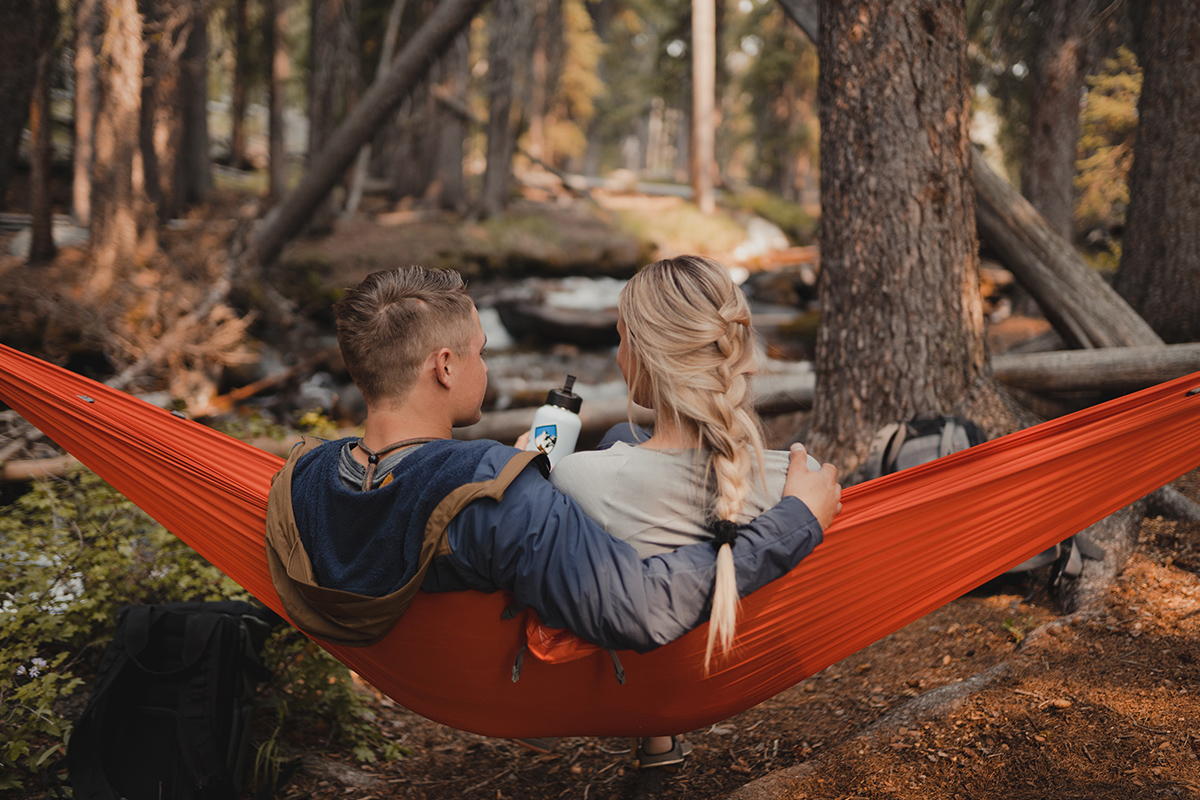
Hammock
The gap between the weight of ultralight backpacking tents and hammocks has significantly reduced nowadays. However, these suspended backcountry beds are still a step ahead of tents in terms of packability.
Unless you are desert camping, hammocks are an excellent alternative when setting camp on rough, uneven terrain that would prove difficult to set up a tent. Their open-air design also makes them an excellent option for hot summer months.
Although it’s supposed to hold your weight throughout the night, the best hammock set-ups, like the Warbonnet Original Blackbird, are known to be more reliable and durable.
The biggest disadvantage of sleeping in a hammock is that you’re more susceptible to the wind. This may lead to a common phenomenon known as the Frozen Butt Syndrome unless you take extra precautions to stay warm.
Bivy and Tarp
A bivy coupled with a tarp is one of the simplest forms of shelter when ultralight backpacking. This is a popular option among backpackers who want the true feeling of sleeping under the stars.
The size and weight of a bivy and tarp system is the main reason most ultralight backpackers ditch the tent. Other benefits include easy set and break down, which allows you to camp later in the day and leave earlier.
Another advantage of bivy camping is the ability to set camp where you’d otherwise struggle to pitch a tent, for instance, on a Slickrock slab.
Bivy camping is not without its downsides, though. For instance, a tarp and bivy system does not offer the same level of protection from the weather compared to tents. Bivies also offer less privacy, which may be a turn-off for some.
Sleeping Bag/Quilt
Your sleeping bag or quilt is the other item that adds noticeable weight to your backpack. Once again, manufacturers have found ways to shave the much-needed ounces in this category.
In the battle of sleeping bags vs quilts for backpacking, quilts are the clear winner in terms of weight and packability. Quilts use less material, and remove the hood, back, and zipper. Thus, they are generally lighter and more packable compared to sleeping bags with a similar temperature rating. However, their zipperless design makes drafts an issue.
On the other hand, sleeping bags are hard to beat in terms of heat retention during a cold night. It’s also worth noting that some ultralight sleeping bags now strip some of the features like the hood to bring the weight closer to that of quilts.
Sleeping bags also edge the competition in terms of ease of set-up. All you do is place it on top of your sleeping pad and slide in. A quilt takes more time to set up because you have to attach it to the sleeping pad first.
In the end, it’s a personal choice. A quilt will fit the bill if you prioritize ultra-lightweight gear and are on a budget. But a sleeping bag will be a better choice for backpacking in alpine and snowy conditions.
Whether you prefer a sleeping bag or quilt, here are some of the most popular brands among ultralight backpackers today;
- Spark Ultralight Sleeping Bag (12 oz)
- Feathered Friends Flicker Quilt Sleeping Bag (19 oz)
- Western Mountaineering SummerLite Sleeping Bag 32 (1 lb. 3 oz)
- Enigma Sleeping Quilt (21.19 oz)
Sleeping Pad
Gone are the days when buying a sleeping pad involved compromising either weight or comfort. Today, it’s easy to get a lightweight pad that folds into a compact size, all while providing plenty of warmth. In terms of numbers, we’re talking about sleeping pads that hit an R-value above three while hovering well under the one-pound mark.
Ultralight backpackers have three choices of sleeping pads: closed-cell foam pads, self-inflating pads, and air pads.
Air pads are a favorite among ultralight backpackers because they are comfortable, compressible, packable, and crazy lightweight. You’ll need to treat them with care, though, as they are the most fragile.
Closed-cell sleeping pads are a great option for backpackers on a tight budget. Although not as lightweight as air pads, closed-cell sleeping pads are not insanely heavy and can actually be cut to length.
Self-inflating sleeping pads sit between air pads and closed-cell sleeping pads in terms of comfort, weight, and price. On the downside, they can be bulky, making it hard to fit in a tiny backpack.
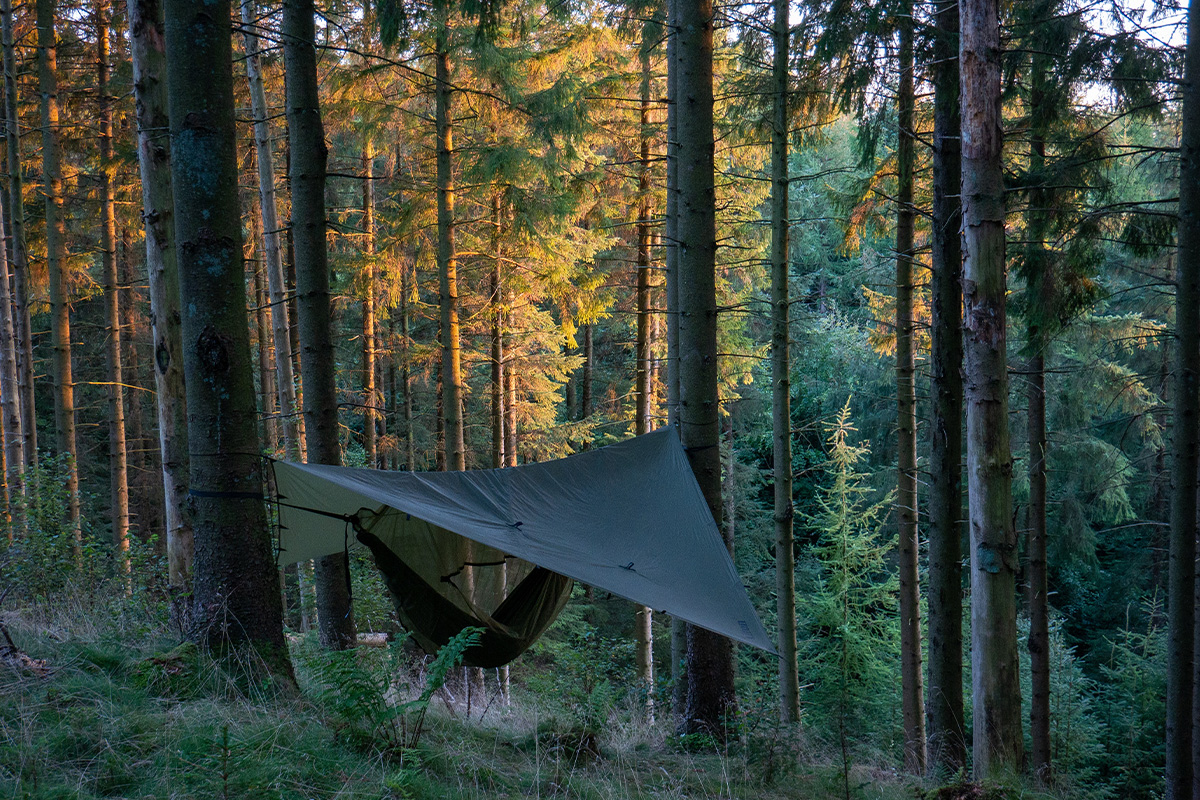
Ultralight Backpacking Clothing and Footwear
Spring/Summer
When packing for spring and summer trips, go for a set of clothes that can work together to keep you comfortable in all weather conditions. Smart ultralight backpackers prefer light, non-bulky clothing items that can be worn all at once when it’s cold and pared down as the weather heats up.
Here is a clothing list of what we’d take for a summer/spring backpacking trip:
- Hiking shorts like these Renegade Shorts in our Men’s Outdoor Wear section. They are easy-care, abrasion-resistant, lightweight, and quick-drying. We also have a wide selection of women’s hiking clothing for women backpackers.
- Two pairs of quick-drying underwear
- Breathable hiking pants
- Short-sleeved cotton t-shirt or sun shirt
- Two pairs of lightweight hiking socks
- One pair of warm socks (for use at camp)
- Trail runners
- Windbreaker/rain jacket
- Liner gloves
- Hat
- Sunglasses
- Down jacket (for use at camp)
- Lightweight rain pants and a jacket are a nice addition to your rain gear for mountain adventures.
Fall/Winter
Fall and winter hiking requires a bit more layers since the focus is staying warm and dry. Here is a clothing system you may want to consider for hiking in these conditions:
- Two pairs of baselayer top and bottom (1 for on trail, the other for in camp)
- One fleece jacket
- One rain jacket
- One down jacket
- Rain pants (1 pair)
- Down pants (1 pair, optional)
- Quick-dry underwear (3)
- Two pairs of midweight socks
- One pair of warm socks
- Rain mitts (for use in trail)
- Two pairs of liner gloves
- Winter boots
- Warm hat
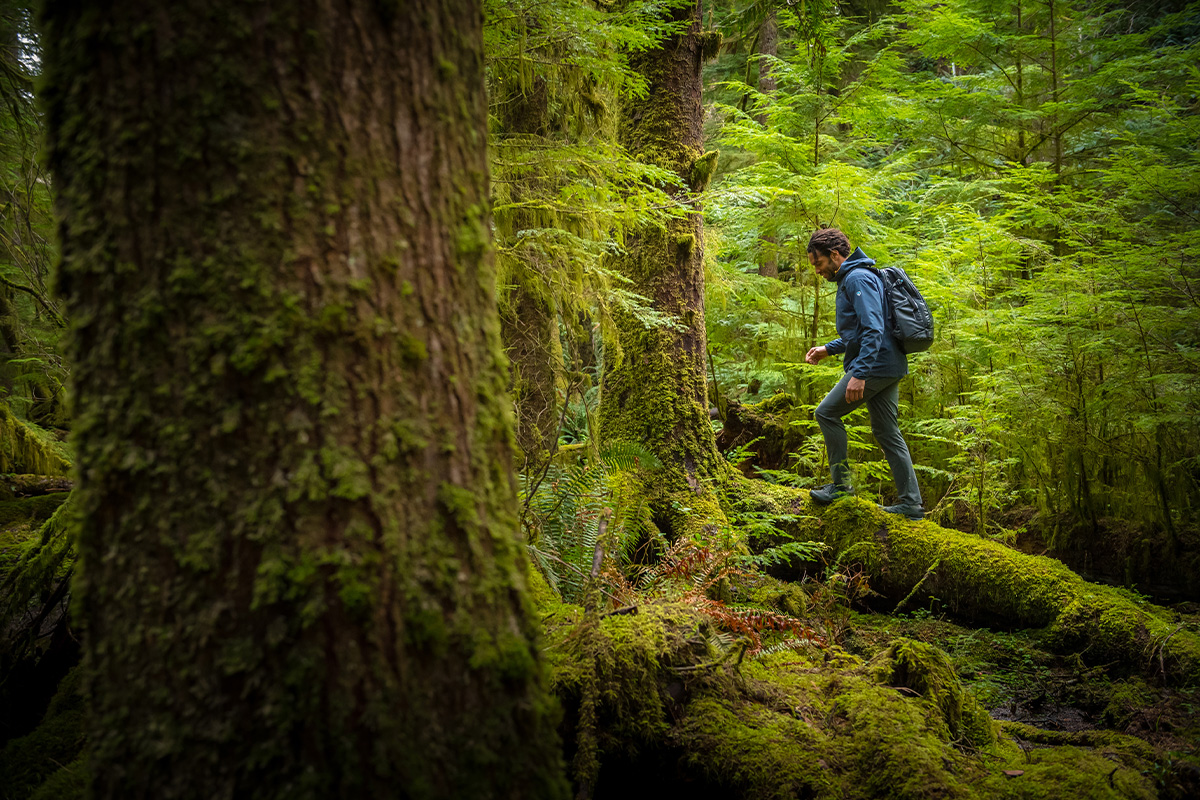
Ultralight Backing Hygiene and Health
Just because you’ll be away from home doesn’t mean ignoring personal hygiene. Lack of proper hygiene could lead to diseases, burns, chafing, and rotting mouth, all of which take a toll on your backpacking experience.
Of course, what you bring for a weekend backpacking trip is different from what you’d pack for a month on the trail. But your hygiene essentials need not add so much to your total pack weight.
Here are backpacking health and hygiene essentials you should carry:
- Hand sanitizer
- Environment-friendly soap
- Ultralight backpacking toothbrush
- Toothpaste (mini tube)
- Dental floss
- Super absorbent microfiber washcloth - can be used for cleaning up or as a bandana
- Unscented baby wipes or moist towelettes
- Non-performed biodegradable toilet paper
- A menstrual cup, tampons, or pads (if you’re not skipping your period with an IUD or the pill)
- Ibuprofen
- A first aid kit (use this first aid checklist to build your hiking kit)
Ultralight Backpacking Consumables
Staying energized on the trail is crucial for keeping you going when you still have a long distance to your destination.
Some backpackers don’t mind eating the same meal over and over again. If anything, the point of food on the trail is to provide the calories you need to stay energized. If you don’t belong to this camp, though, it’s important that you pack a variety of food items you’ll enjoy eating. Ideally, you should plan for 2500-4500 calories or 1.5 lbs to 2.5 lbs worth of food per person daily.
Below is a quick overview of our favorite backpacking food items.
Breakfast
- Scrambled powdered eggs
- Instant oatmeal
- Pre-made overnight oats
- Pancakes
- Granola or cereal with powdered milk
Lunch
- Pre-made sandwiches, bagels, or wraps
- Pre-made salad
- Beef jerky
- Cheese and crackers
- Hummus dip
- Nuts and dried fruit
Backpacking Dinner Ideas
- Ramen noodles
- Instant soup
- Pesto pasta
- Mac and cheese
- Veggie couscous
Check out our best backpacking food ideas article for more details on how to prepare all the meals above. This camping food storage post has additional tips on handling food while camping.
Ultralight Backpacking Cookware
Like the backpacking big four, backpacking cookware has gotten lighter and lighter over the years. This means you can have more fun preparing your backpacking meals without feeling like you’re carrying the world in your pack.
So, what should be in an ultralight backpacker’s cooking kit?
- Ultralight camping stove (Jetboil Stash Cooking System, 7.1 ounces)
- An ultralight camping stove (Toaks Titanium 750ml pot with lid, 3.6 ounces)
- Spork (Toaks titanium long handle spork, 0.65 ounces)
- A pot holder that adds almost no weight like the GSI Microgripper
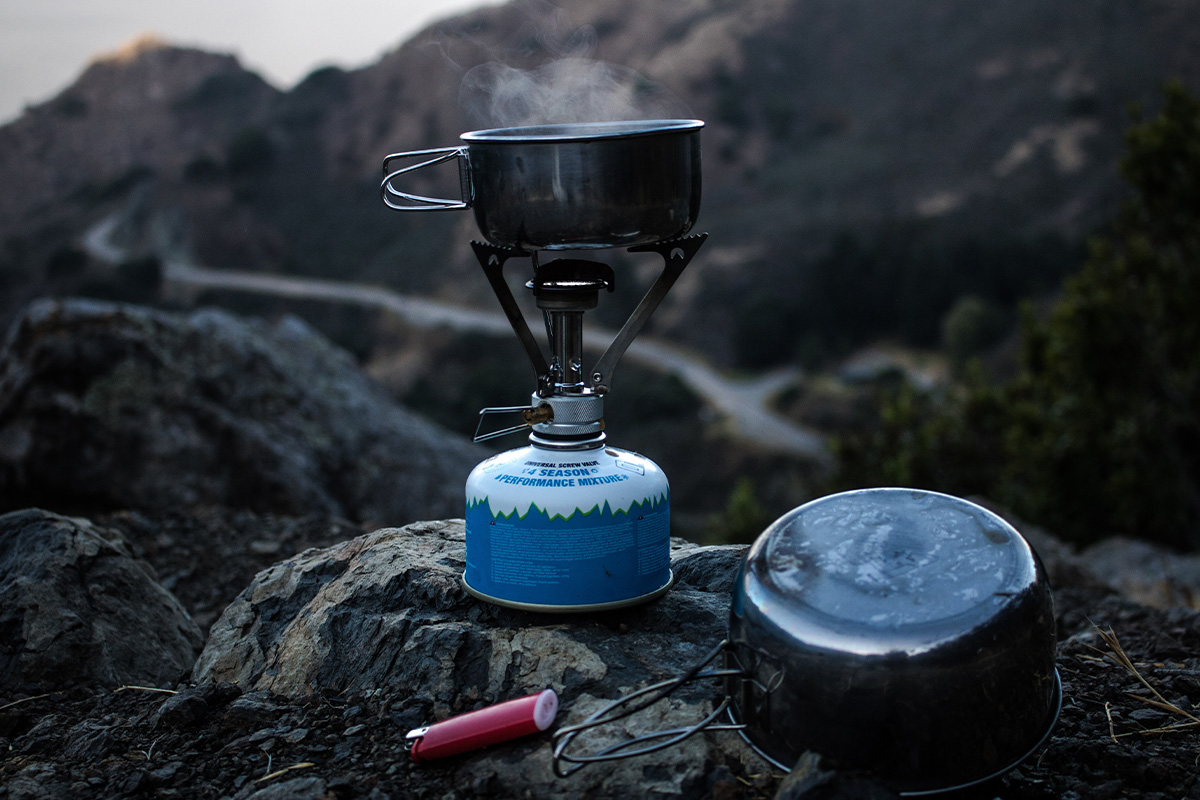
Tips on How to Prepare for an Ultralight Backpacking Trip
Good backpackers learn from their mistakes. But the smart ones learn from others’ mistakes. That said, here are essential ultralight backpacking tips that experienced backpackers wish they knew before hitting the trail.
Be Conscious of the Weight
This is obvious, but there’s no harm in repeating it again here. You are responsible for carrying everything you throw in your pack, so make each item count. You’ll come across two terms in most ultralight backpacking discussions: base weight and pack weight.
Base Weight vs Pack Weight - Know the Difference
Pack weight, a.k.a total pack weight, is the weight of your fully packed backpack. On the other hand, backpacking base weight refers to the total pack weight minus all the consumables. Consumables are things that get consumed in the backcountry, including food, water, sunscreen, soap, etc.
Although base weight gets the most attention, pack weight is just as important because you’re going to carry everything. A rule of thumb when determining how much weight you should carry when backpacking is not to exceed 20% of your body weight. Of the total weight, ultralight backpackers aim for a sub-10-pound base weight.
Ensure You Know How to Use Your Camping Gear
Your gear is all you have once you get outside civilization. Your familiarity with your equipment could be the difference between having fun in the great outdoors and struggling to come back alive.
For instance, if you’ve decided to refill from rivers, lakes, or any other water source, take the time to understand how your new water filtration system works before hitting the trail.
Start Easy
Backpacking can be challenging because you’re carrying a heavy back while traversing an area you’re not familiar with. For your first trips, it’s advisable to pick easy and well-traveled trails around you. You may also want to plan your backpacking adventures during summer to increase your odds of a comfortable experience.
Consider Short Round Trips with Lower Elevation Gain
Your first backpacking trip (even the second and third) isn’t the best time to try breaking the speed record for the Appalachian Trail. This is also not the best time to take on trails with significant elevation gain. Even for experienced day hikers, we recommend keeping your daily mileage under 9 miles and much lower if you’re new to hiking.
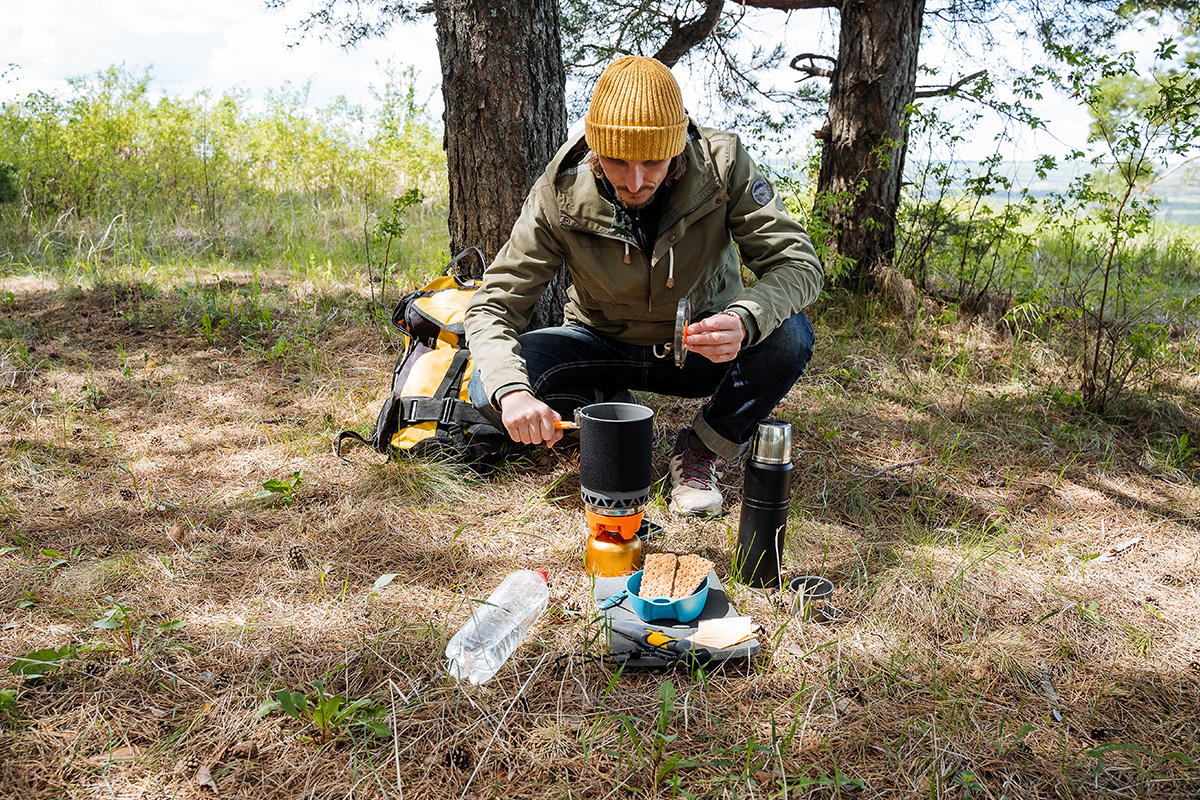
Final Thoughts
Ultralight backpacking is super misunderstood. And there’s a lot of shaming on both sides of the divide.
Traditional backpackers would rather be slow but comfortable than cover those miles and be miserable. On the other hand, anyone carrying a “house” on their back is insane to ultralight enthusiasts.
This confusion comes in when backpackers focus too much on what others are carrying instead of the reasons they do it.
Backpacking in itself should be fun, not a source of misery and suffering. That said, it’s okay for ultralight backpacking to mean different things to different people.
Perhaps you’re the type of hiker who will remove tags off your hiking outfits for summer so you can bring some booze. Or, you are that hiker who doesn’t mind carrying a light camping chair to enjoy some comfort after a long day of walking.
Whatever camp you find yourself in, the secret is to strike the balance between efficiency, comfort, and safety. Bring what you can so long as you can get your target miles in while eating and sleeping comfortably.
Whatever you do, aim to be a happy, friendlier, and less tired backpacker!
Happy Trails.
FAQs
What weight is considered ultralight backpacking?
True ultralight backpacking is when your base weight does not exceed 10 pounds.
How durable are ultralight backpacks?
Ultralight backpacks are as durable as traditional backpacks (if not more), so long as you stick to their rated weight capacity. The best brands are made of strong and hard-wearing materials and feature reinforced straps to resist tearing.
What is the best material for ultralight backpacking?
Dyneema X, Tyvek, Silnylon, and Cuben Fiber are currently the leading fabrics in the ultralight marketplace. Dyneema is considered the best for ultralight backpacks due to its strength-to-weight ratio and waterproof capabilities.
What is the difference between fastpacking and ultralight backpacking?
Fastpacking refers to trail running with an ultralight backpack. That said, the difference between the two is that fastpacking lets you cover more ground than you would when ultralight backpacking.
How much money do you need to be a backpacker?
The cost of an entire backpacking gear system can range from $500 to $3000 or more, depending on whether you want traditional or ultralight gear. Generally, the lighter the gear, the pricier it gets.
How old are backpackers usually?
Most backpackers are 20-25 years old.


